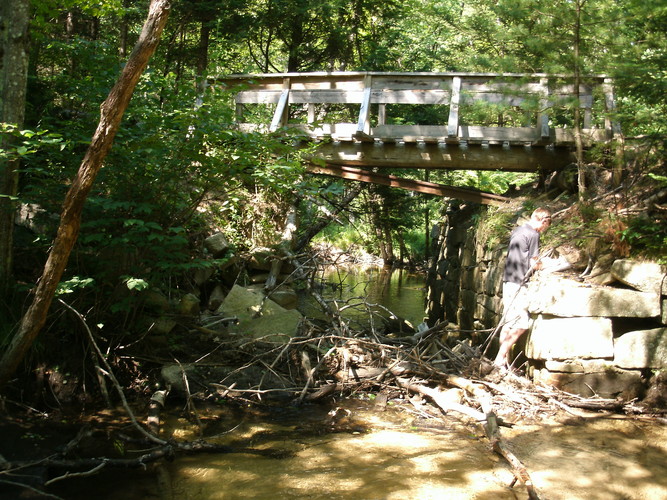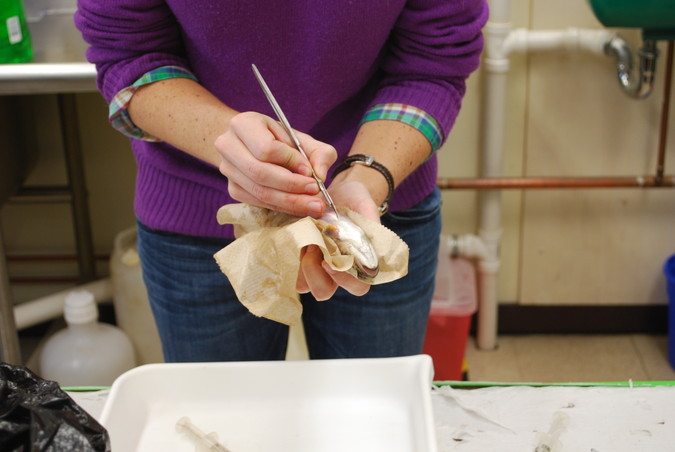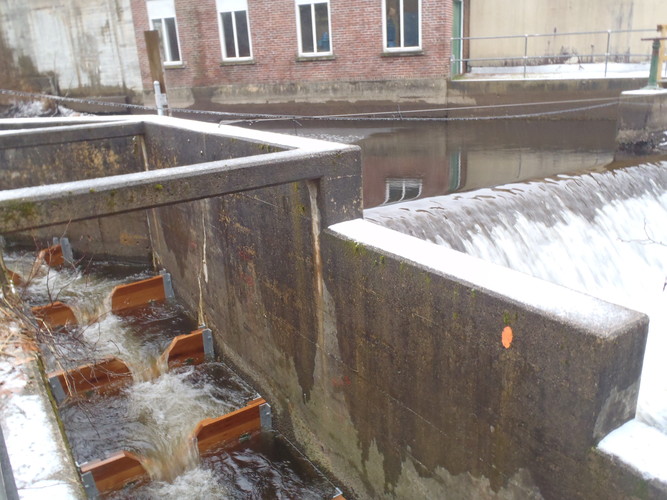The Wrack
The Wrack is the Wells Reserve blog, our collective logbook on the web.
The Wrack is the Wells Reserve blog, our collective logbook on the web.
 This summer, in our fifth year working with our partners to improve aquatic habitats in Branch Brook, we took on a Herculean task: Remove a four-foot-long wall of large granite blocks, trapped sticks, and sediment from the brook, restoring access to a seven-mile network of stream habitat for native brook trout and a host of other aquatic organisms.
This summer, in our fifth year working with our partners to improve aquatic habitats in Branch Brook, we took on a Herculean task: Remove a four-foot-long wall of large granite blocks, trapped sticks, and sediment from the brook, restoring access to a seven-mile network of stream habitat for native brook trout and a host of other aquatic organisms.
Erosion had caused stones from old bridge abutments to fall into the brook, creating a barrier and raising the upstream water level by several feet. But getting heavy equipment to the site was impractical. How would we maneuver the massive chunks of granite?

As the warmest part of the summer is upon us here in southern Maine, the movement of fish in Branch Brook has slowed down and researchers here at The Reserve have caught a break from their fishing efforts. We recently removed our fyke net from the river at the Route 9 intersection but are continuing to monitor the trap at the top of the fish ladder at the Kennebunk-Kennebunkport-Wells Water District and are finally having some time to look at our data of what was caught, tagged, and recaptured this year and compared to last. So far, some interesting results!
 In his recent post, Spreading the Fish Ladder News, Jake mentioned our imminent use of passive integrated transponders, or PIT tags, to track fish. But just what is a PIT tag and exactly how does it work?
In his recent post, Spreading the Fish Ladder News, Jake mentioned our imminent use of passive integrated transponders, or PIT tags, to track fish. But just what is a PIT tag and exactly how does it work?
A passive integrated transponder is a miniature electronic circuit typically encased in glass and implanted under an animal's skin or in a body cavity (the fish tags we'll use are thin and just 12mm long). Each tag is programmed with a unique number to identify an individual animal. That number is read automatically when the animal travels close to a receiving station.
 This month customers of the Kennebunk, Kennebunkport, and Wells Water District (KKWWD) got some news about the upgrades and repairs to the fish ladder on Branch Brook in the Winter 2014 Newsletter. Chief Plant Operator Greg Pargellis provided a nice write-up on a really positive collaboration with the Wells Reserve to bring the fish ladder back on line.
This month customers of the Kennebunk, Kennebunkport, and Wells Water District (KKWWD) got some news about the upgrades and repairs to the fish ladder on Branch Brook in the Winter 2014 Newsletter. Chief Plant Operator Greg Pargellis provided a nice write-up on a really positive collaboration with the Wells Reserve to bring the fish ladder back on line.
This isn't the first time that the fish ladder has been in a KKWWD report. In the 1954 Trustees Report (see pg. 14), the Water District mentions plans to increase the height of the dam by 2 feet and to build a fish ladder which was ordered by the Maine Department of Fish and Game.
It’s that time of year… fall is in the air and (if you’re a brook trout) love is in the air too! October and November is prime spawning time for Eastern Brook Trout. They’ve been fattening up all summer on aquatic insects. Now the mature females have bellies full of eggs and are looking for a spots with cold, clear water and loose, clean gravel where they can make their nests, called redds.